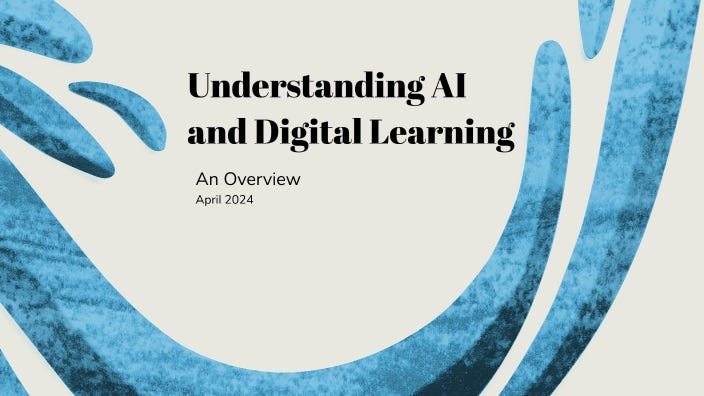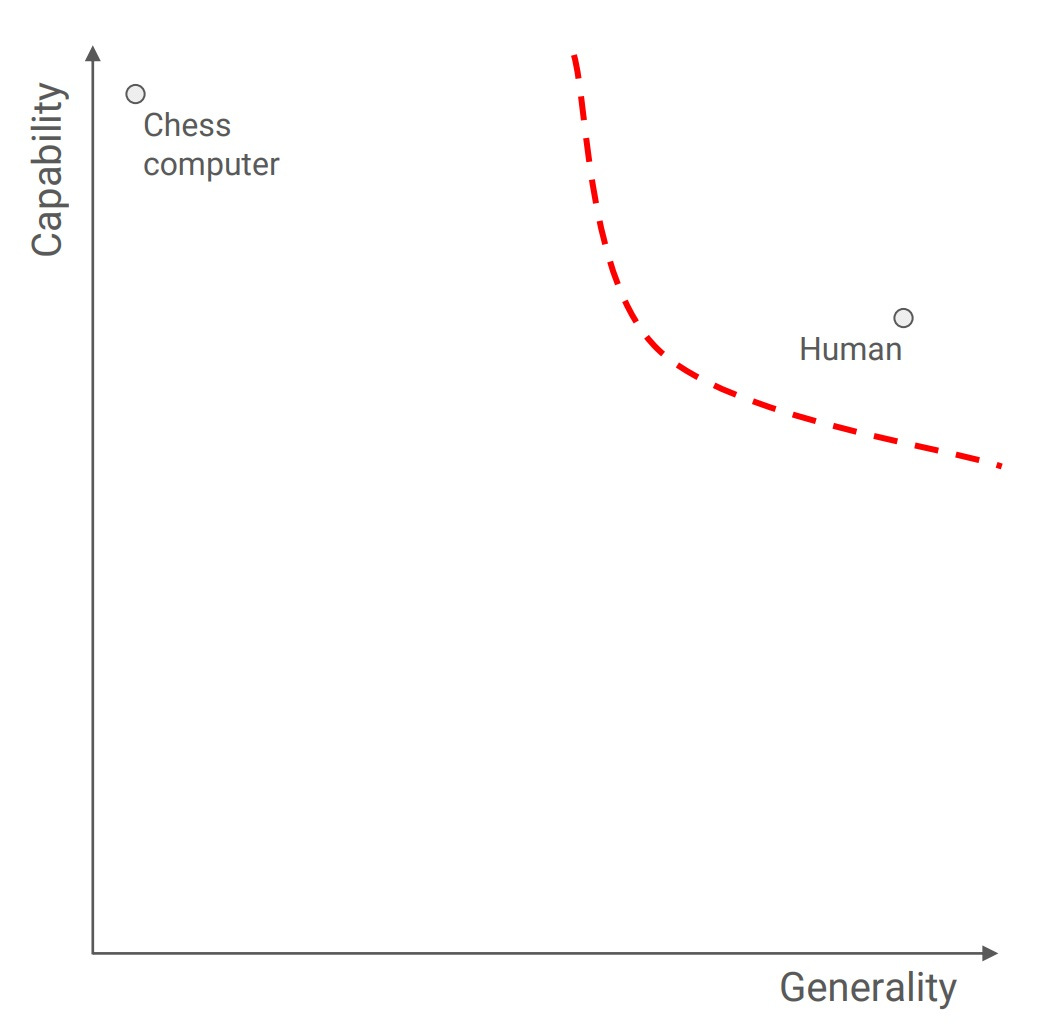Six Key Points of Understanding in AI and Digital Learning
Foundations to Steer Through the Waves of Change
Introduction to the CPD Session on AI and Digital Learning
Last week, I had the privilege of leading a CPD session entitled 'Understanding AI and Digital Learning,' where we likened our journey through AI in education to navigating a wave.
The session creatively explored this analogy, presenting our educational technology journey as being on both constructive and destructive waves, mirroring the history, challenges, and advancements in AI.
Waves, caused by the wind blowing across a body of water, come in two forms: constructive and destructive. Constructive waves build and carry forward, whereas destructive waves crash and dissipate. In AI education, our aim is to harness the building momentum of constructive waves while steering clear of the destructive crashes. Waves are characterised by features such as wavelength, crests, and troughs—similar to the varying trends in educational technology over time.
Audrey Watters discusses the different waves of educational technology in her book Teaching Machines: The History of Personalised Learning. One notable example she cites is the work of behaviourist B.F. Skinner, who developed a teaching machine that allowed students to learn at their own pace. This machine provided immediate feedback on questions, enabling students to progress upon giving correct answers — a method still prevalent in today's "personalised learning," which Watters cleverly describes as “pigeon training with a snazzier interface” (Watters, 2018). Further illustrating our fixation with interactive technology, Garcia’s recent article in Mental Garden—titled ‘Pigeons, Dopamine, and Social Media: The Reason Why You Are Hooked to the Screen’ — explores a similar theme with background to B.F. Skinner’s famous pigeon box experiment.
It is crucial, therefore, to understand and contextualise both AI and the history of educational technology (or edtech) as we navigate these waves. The presentation was structured into six parts, each addressing a different aspect of this dynamic field.
Part 1: Foundations and Current Perspectives
We began our session with an overview of recent developments, key readings, and academic perspectives on AI. This included insights from a range of events, such as the discussion on 'Can artificial intelligence be regulated and if so, how?' at The Royal Society, the launch of Goodnotes' Generative AI Report, and the forthcoming 'Assurance in AI Education' at Loughborough University. Additionally, our school hosted a significant event for parents on AI in education, which has since sparked valuable discussions with academics and professionals involved in AI and machine learning.
Part 2: Legacy of UK Innovations
Part of these subsequent discussions highlighted the importance of history and invention. Our exploration took us through the history of invention and innovation in the UK, drawing inspiration from figures such as Thomas Bayes and Isaac Newton. We discussed how institutions like Edinburgh University, celebrating 60 years of computer science and AI research, contribute to this legacy, especially with facilities like The National Robotarium. Verity Harding’s book "AI Needs You" was also highlighted for its discussion on engaging with AI’s developmental trajectory. Harding writes about the history of tech revolutions (the space race, in vitro fertilization, and the internet). She encourages all of us to join the conversation about AI and shape its possible futures.
Part 3: Ethical Considerations and AI Literacy
The deeper part of our wave examined the ethical use of AI, transparency, and collaboration. This included the practical step of proposing an annual AI Charter to guide our pupils and teaching. AI literacy was discussed with real examples from our school community, illustrating how these concepts are being integrated into our learning environment.
Part 4: Vision and Values Integration
We then moved on to outlining our values in digital learning —creativity, responsibility, adaptability, fun, and trust (CRAFT)— to help inform our engagement with AI and prepare for the future.
At the Regulation in AI event, John Gibson from Faculty AI provided a helpful diagram on defining the space and where we want to be with narrow and general models.
We went on to share insight on making the distinction between AI applications (which change quickly), AI fundamentals, and skills. Finally, this part of the discussion illustrated the value that will be placed on creativity, pupil interaction, and skills in learning.
Part 5: Shaping Future Interactions and Learning Environments
Highlighting the significance of narrative and collaborative learning, we referenced more thoughts from Audrey Watters on the value of building knowledge through shared conversations and the vision from Tim Berners-Lee for the World Wide Web (WWW). This contrasts sharply with the current trend of app-based, isolated learning environments promoted by many tech companies.
Part 6: Looking Ahead at the Breaking Wave
In the concluding part of our session, we addressed the "Wild West" nature of current AI developments, as noted by Dr. S Khareghani at the recent Regulation in AI event. The discussion rounded out with thoughts on balancing innovation with practical applications and skills development essential for the UK's economic and educational growth.
Final Thoughts and Actions
I recommended an AI reading list which I sourced through local bookshop P&G Wells and discussed broader social issues highlighted by Jonathan Haidt regarding childhood development and technology’s impact.
Moving forward, our goal is to ensure that our educational practices not only incorporate technological advances but also uphold the essential elements of childhood play, fun, and shared learning.
The session aimed to help all staff better understand and position AI and digital learning, moving beyond the hype and media narratives to emphasise collaborative learning and professional development.
If you're interested in accessing the full link to the CPD session or would like to arrange a similar presentation for your organisation, please feel free to get in touch. I'd be delighted to share resources and experiences with you.




